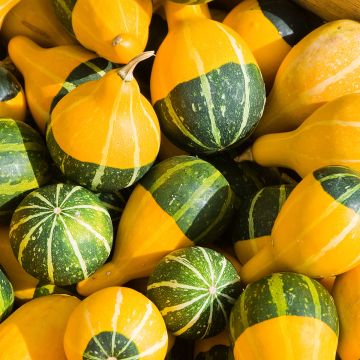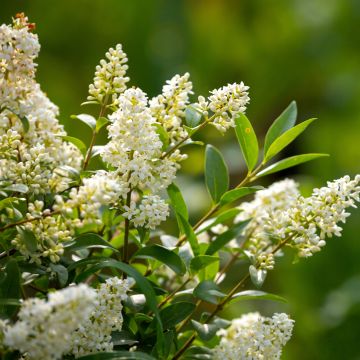

Spiked speedwell Blue Shades Seeds - Veronica spicata
Spiked speedwell Blue Shades Seeds - Veronica spicata
Veronica spicata Blue Shades
Spiked Speedwell
Sowing not yet germinated. To be continued...
Véronique KERNEUR, 11/04/2016
Special offer!
Receive a €20 voucher for any order over €90 (excluding delivery costs, credit notes, and plastic-free options)!
1- Add your favorite plants to your cart.
2- Once you have reached €90, confirm your order (you can even choose the delivery date!).
3- As soon as your order is shipped, you will receive an email containing your voucher code, valid for 3 months (90 days).
Your voucher is unique and can only be used once, for any order with a minimum value of €20, excluding delivery costs.
Can be combined with other current offers, non-divisible and non-refundable.
Home or relay delivery (depending on size and destination)
Schedule delivery date,
and select date in basket
This plant carries a 6 months recovery warranty
More information
We guarantee the quality of our plants for a full growing cycle, and will replace at our expense any plant that fails to recover under normal climatic and planting conditions.
Would this plant suit my garden?
Set up your Plantfit profile →
Description
Veronica spicata Blue Shades, also called spiked speedwell Blue Shades, is a vigorous perennial with a compact, yet graceful habit, bearing long, vertical spikes covered with small, bright blue, star-shaped flowers in summer. Its creeping growth allows the plant's mounds to develop into carpets. It thrives in sunny flowerbeds, on slopes and rock gardens, in rather dry, chalky soil.
Spiked speedwell is a perennial plant of the family Plantagenaceae, formerly classified as the family Scrophulariaceae. It grows mainly in the mountains, up to 2 050 metres above sea level, and more rarely on the plains. It is found growing in meadows, on rocky slopes, at the edge of forests on calcareous soil. The 'Blue Shades' cultivar features a dense, bushy, vigorous growth, reaching 40 cm high and spreading 1 m in diameter from its dense clump. Its hairy stems bear deciduous, oval to linear, dark green leaves with finely toothed margins. In summer, from July to August and sometimes until September, it produces flowers with star-shaped petals of an intense and vivid shade: an intermediate hue of blue, between ultramarine and cobalt, gathered on spikes 60 cm high.
This variety should be planted in any well-drained soils, even stony, calcareous soils and preferably in the sun. Veronica Blue Shades will be very useful to decorate the base of shrub roses or can be planted in dry beds, on a slope, in a rock garden, combined with coneflower, Stipas, red shrubby sages, California poppies or Phlomis. Its bright blue, relatively flexible spikes provide vertical accents to a low-lying bed. The spiked speedwell can also be used as a specimen plant.
Report an error about the product description
Flowering
Foliage
Plant habit
Botanical data
Veronica
spicata
Blue Shades
Scrophulariaceae (Plantaginaceae)
Spiked Speedwell
Cultivar or hybrid
Other Flower seeds A to Z
View all →Planting and care
Sow from spring to mid-summer in a special seed starting compost, taking care to cover the seeds lightly. Seal within a polyethylene bag that you will keep in the dark until the first seedlings begin to appear. Keep the compost moist but not wet. Germination takes about 30 days at 20-25 °C. When they are large enough to be handled, prick out the young plants into 8 cm diameter containers or pots and let them grow in cooler conditions. Gradually acclimatize them to outdoor conditions and plant outdoors in full sun in well-drained soil, 60 cm apart. Spiked speedwell is a great plant for sunny positions and poor soils. It likes calcareous soil that is rather dry, stony or gravelly, or at least well-drained. It tolerates waterlogged soils in winter much less than it does cold temperatures. Since dried out floral stems are not always very aesthetic, it is preferable to remove them, as this will also encourage repeat blooming. You can also let a few plants self-seed though they will not always faithfully reproduce the traits of their parents plants. In any case, the clumps should cut back in the spring before the plant starts to develop new growth again.
Sowing period
Intended location
Planting & care advice
-
, onOrder confirmed
Reply from on Promesse de fleurs
Similar products
Haven't found what you were looking for?
Hardiness is the lowest winter temperature a plant can endure without suffering serious damage or even dying. However, hardiness is affected by location (a sheltered area, such as a patio), protection (winter cover) and soil type (hardiness is improved by well-drained soil).

Photo Sharing Terms & Conditions
In order to encourage gardeners to interact and share their experiences, Promesse de fleurs offers various media enabling content to be uploaded onto its Site - in particular via the ‘Photo sharing’ module.
The User agrees to refrain from:
- Posting any content that is illegal, prejudicial, insulting, racist, inciteful to hatred, revisionist, contrary to public decency, that infringes on privacy or on the privacy rights of third parties, in particular the publicity rights of persons and goods, intellectual property rights, or the right to privacy.
- Submitting content on behalf of a third party;
- Impersonate the identity of a third party and/or publish any personal information about a third party;
In general, the User undertakes to refrain from any unethical behaviour.
All Content (in particular text, comments, files, images, photos, videos, creative works, etc.), which may be subject to property or intellectual property rights, image or other private rights, shall remain the property of the User, subject to the limited rights granted by the terms of the licence granted by Promesse de fleurs as stated below. Users are at liberty to publish or not to publish such Content on the Site, notably via the ‘Photo Sharing’ facility, and accept that this Content shall be made public and freely accessible, notably on the Internet.
Users further acknowledge, undertake to have ,and guarantee that they hold all necessary rights and permissions to publish such material on the Site, in particular with regard to the legislation in force pertaining to any privacy, property, intellectual property, image, or contractual rights, or rights of any other nature. By publishing such Content on the Site, Users acknowledge accepting full liability as publishers of the Content within the meaning of the law, and grant Promesse de fleurs, free of charge, an inclusive, worldwide licence for the said Content for the entire duration of its publication, including all reproduction, representation, up/downloading, displaying, performing, transmission, and storage rights.
Users also grant permission for their name to be linked to the Content and accept that this link may not always be made available.
By engaging in posting material, Users consent to their Content becoming automatically accessible on the Internet, in particular on other sites and/or blogs and/or web pages of the Promesse de fleurs site, including in particular social pages and the Promesse de fleurs catalogue.
Users may secure the removal of entrusted content free of charge by issuing a simple request via our contact form.
The flowering period indicated on our website applies to countries and regions located in USDA zone 8 (France, the United Kingdom, Ireland, the Netherlands, etc.)
It will vary according to where you live:
- In zones 9 to 10 (Italy, Spain, Greece, etc.), flowering will occur about 2 to 4 weeks earlier.
- In zones 6 to 7 (Germany, Poland, Slovenia, and lower mountainous regions), flowering will be delayed by 2 to 3 weeks.
- In zone 5 (Central Europe, Scandinavia), blooming will be delayed by 3 to 5 weeks.
In temperate climates, pruning of spring-flowering shrubs (forsythia, spireas, etc.) should be done just after flowering.
Pruning of summer-flowering shrubs (Indian Lilac, Perovskia, etc.) can be done in winter or spring.
In cold regions as well as with frost-sensitive plants, avoid pruning too early when severe frosts may still occur.
The planting period indicated on our website applies to countries and regions located in USDA zone 8 (France, United Kingdom, Ireland, Netherlands).
It will vary according to where you live:
- In Mediterranean zones (Marseille, Madrid, Milan, etc.), autumn and winter are the best planting periods.
- In continental zones (Strasbourg, Munich, Vienna, etc.), delay planting by 2 to 3 weeks in spring and bring it forward by 2 to 4 weeks in autumn.
- In mountainous regions (the Alps, Pyrenees, Carpathians, etc.), it is best to plant in late spring (May-June) or late summer (August-September).
The harvesting period indicated on our website applies to countries and regions in USDA zone 8 (France, England, Ireland, the Netherlands).
In colder areas (Scandinavia, Poland, Austria...) fruit and vegetable harvests are likely to be delayed by 3-4 weeks.
In warmer areas (Italy, Spain, Greece, etc.), harvesting will probably take place earlier, depending on weather conditions.
The sowing periods indicated on our website apply to countries and regions within USDA Zone 8 (France, UK, Ireland, Netherlands).
In colder areas (Scandinavia, Poland, Austria...), delay any outdoor sowing by 3-4 weeks, or sow under glass.
In warmer climes (Italy, Spain, Greece, etc.), bring outdoor sowing forward by a few weeks.



























































